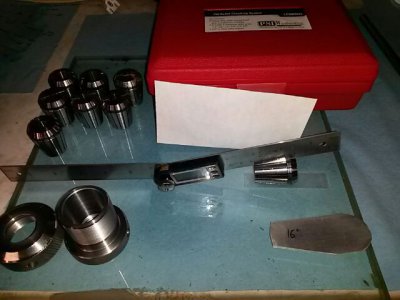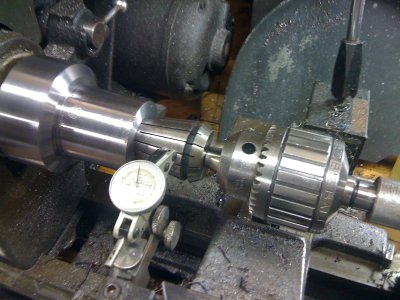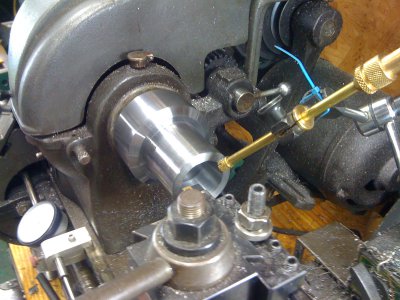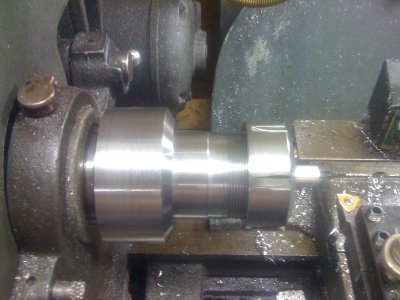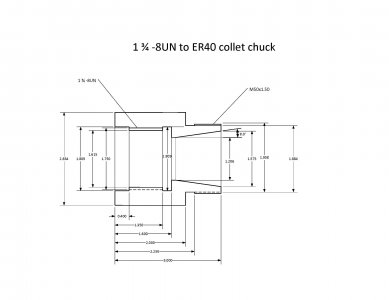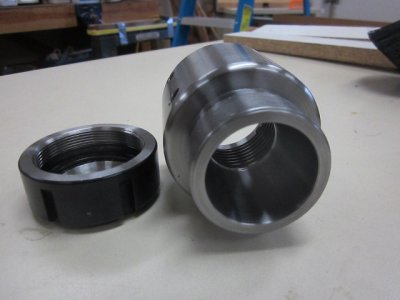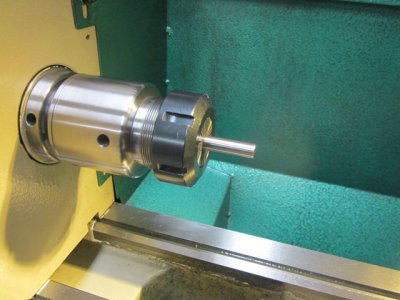- Joined
- Oct 25, 2012
- Messages
- 29
I'm pondering making a DIY ER40 collet chuck for my logan 9" lathe with 1.5" X 8tpi spindle. I have MT3 taper inside the spindle but I'd rather leave that open and use the external threads.
I'm looking at some designs on the net, and seems like I have the right size chunks of metal to make something happen, but it's all aluminum. Is it OK to make the collet chuck out of aluminum?
Does anybody have the dimensions of the ER40 collets? I don't have any to look at.
Thank you.
Strantor:
Just google "er40 collet dimensions." Here is one site with dimensions: http://www.maritool.com/Collets-ER-Collets-ER40-Collets/c21_56_64/index.html
I made my own ER40 collet chuck for my Grizzly 10x22 with a 1.75 - 8 threaded spindle. It was one of the first few projects on my first lathe, so if I can do it, you probably can too. I did buy a chunk of 4130, but it came out fine. The hardest part was the 1.75-8 internal threads. I used a commercial nut, which was precisely machined and hardened (that being beyond easy for me). Some things are just a lot easier to buy; for example, if you needed a hardened shoulder bolt with a socket head, you could make one, but it would be very difficult and time-consuming. If you already have a MT3-ER40 colllet chuck, just use its nut. Or buy an R8-ER40 chuck (even if you don't have a mill now, you are bound to get one sooner or later). If you join the yahoo group "grizzly10x22andthelike" you can see my chuck and a drawing of it on "Craig's G0602 pics" https://groups.yahoo.com/neo/groups/10x22grizzlyandthelike/photos/albums/510884303 . Good luck!


